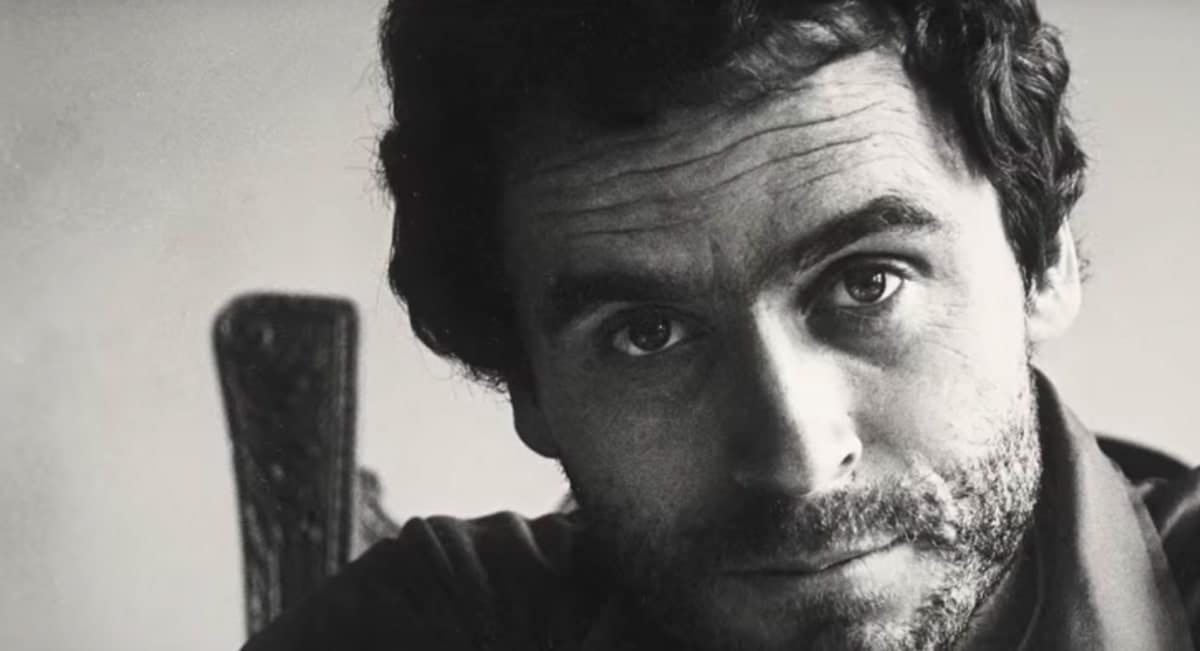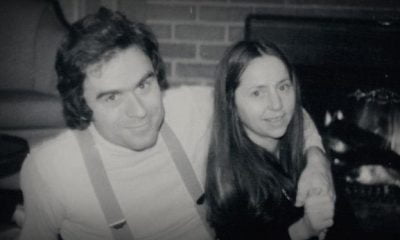Diving in Hell
Unable to determine the year of Ted Bundy’s first crime. Several sources determine his passage to the act in 1974. He then begins to sexually assault young women, using various and varied objects, while knocking them unconscious. Some disappear, and will never be found. He then moved to Salt Lake City, Utah, to study law. Here again, women mysteriously disappear. Some are found dead, violently mutilated. One evening, he was stopped by the police as he drove slowly through the dimly lit streets of the city, presumably in search of his next victim. Several unusual items were found in the trunk of his car – such as a balaclava, gloves and a flashlight. In custody, he will have to undergo an identification session. For this one, he completely changes his appearance but is still recognized by a woman who accuses him of attempted kidnapping.
A trial, therefore, takes place. Very confident, Ted Bundy does not think for a single second that he can be doomed. Very involved, he does not hesitate to take charge of his case. Although he loudly proclaims his innocence, he is found guilty. The judge orders sessions with a psychologist, who must determine whether or not the man presents a danger to society. After several interviews, the verdict is final: Ted Bundy is upset and has a violent side to him. He is therefore sentenced to prison. The sentence, not determined at the outset, could range from one to fifteen years. While he remains behind bars, the police link him to murder in Colorado. To face this accusation, he accepts the extradition and is transferred to Aspen prison.
Very annoyed to be treated like any prisoner, he thinks only of one thing: preparing his defence, but especially his escape. He practices running in his tiny cell, changing clothes quickly and jumping out of bed, to prepare his legs for an impact. On D-Day, while quietly reading a book in a corner of the courthouse while awaiting the start of his trial, he flees through one of the windows, and vanishes into nature. During this time, the investigators mount a file against him, in particular for the murder of a young woman. Ted Bundy will not be found until seven days later and returned to prison pending trial.
Catch Me If You Can
Determined not to languish in prison, he put the cover back a few months later. One evening at the end of 1977, he managed to escape. For the second time, then. He had starved himself, weighing only 63 kilos and succeeding in passing through the trapdoor located in the ceiling of his cell. The murders then resume, in Florida this time. 46 days after the escape, a mysterious man is arrested in Pensacola. Police did not find out until days later that it was actually Ted Bundy, one of America’s most wanted men. In April 1978, he was at the heart of two investigations for a series of murders of a sexual nature. It was only three months later, after having gathered a certain amount of evidence, that the investigators announced, in front of the press, that he was officially indicted. Filmed,Joe Berlinger , for the documentary series he produced for Netflix , Ted Bundy: Self-Portrait of a Killer . In the images, Ted Bundy appears confident and expresses his desire to speak to the press. What will be refused to him: it is a tribunal, not a circus.
The trial takes place under the watchful eye of the cameras, and young girls in bloom, under the spell of the blue eyes of Ted Bundy. “He does not have the face of a serial killer”, says one, while another, mouth in heart, will speak of him as “a handsome boy very clean on him”. The accused assures his own defense, and only very rarely calls upon his officially appointed lawyers. He thinks he is superior, capable of being able to prove his innocence.
To coax the judges, he pulls out all the stops. He doesn’t hesitate to wear a bow tie and ask his then-girlfriend to marry – while the latter was called to the bar to testify on his behalf. Ultimately, all this will not be able to save him the death penalty. In accordance with the jury’s decision, the judge orders him to pass on the electric chair, after describing him as an “extremely wicked, shockingly evil and vile” man – words strong and meaningful enough to become a film title, directed once again by Joe Berlinger. He is sent to death row, and will remain there for many years before being executed.
That won’t stop him from starting a family with his girlfriend – the same one who accepted his proposal in the middle of his trial. A daughter will also be born from this love. and will remain there for many years before being executed. That won’t stop him from starting a family with his girlfriend – the same one who accepted his proposal in the middle of his trial. A daughter will also be born from this love. and will remain there for many years before being executed. That won’t stop him from starting a family with his girlfriend – the same one who accepted his proposal in the middle of his trial. A daughter will also be born from this love.



